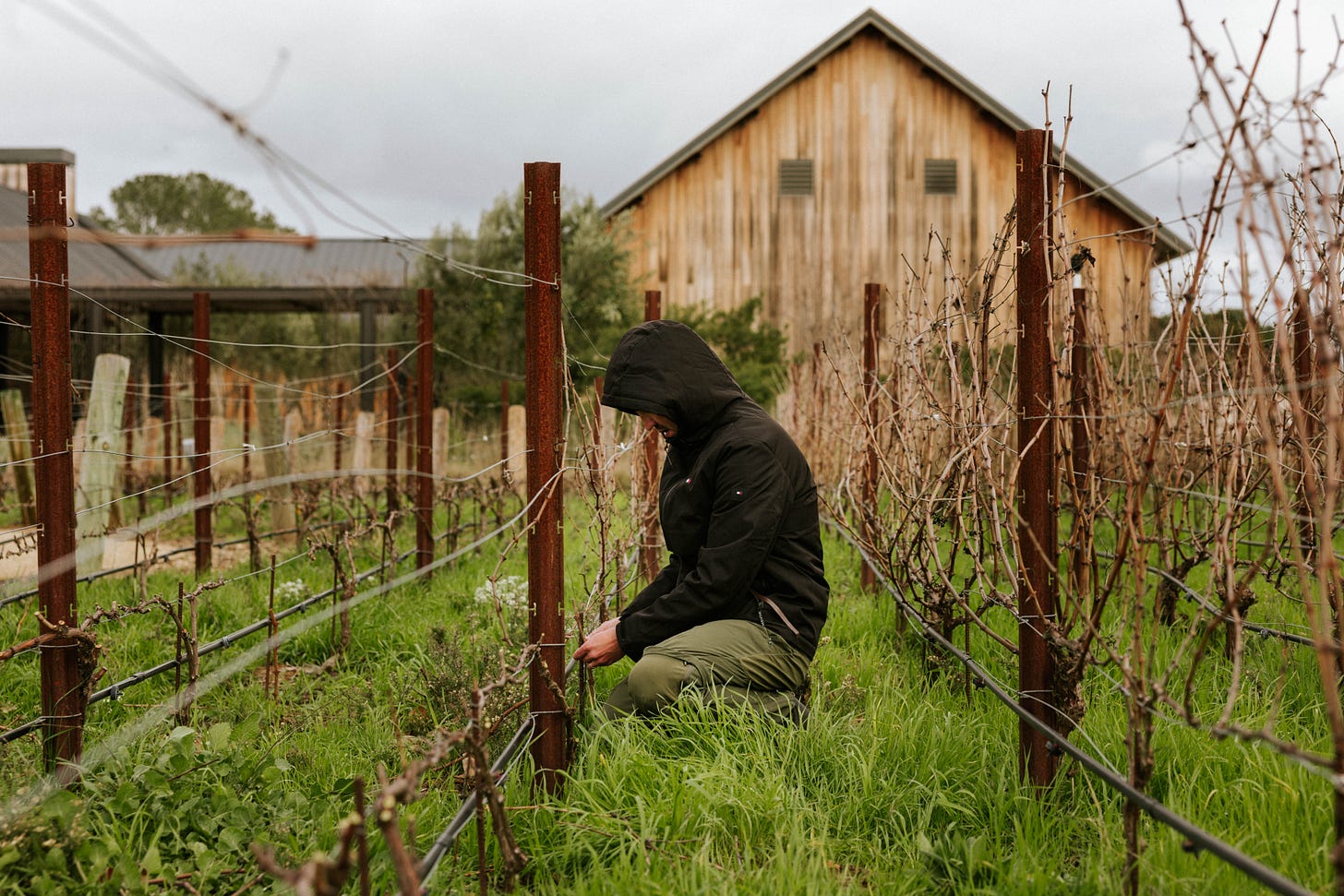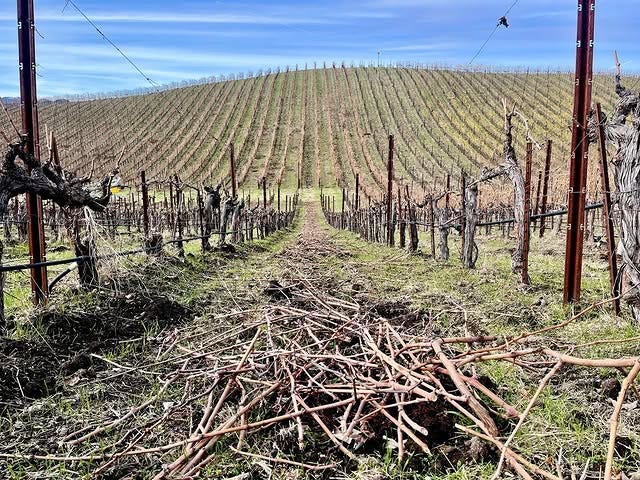How Many Ways Can I Say, "It's Pruning Season"
(Or, How to Tell the Same Story Every Year Without Losing Your Mind)
Every year, without fail, we in the wine industry find ourselves writing about the same seasonal milestones. Pruning. Budbreak. Bloom. Fruit Set. Veraison. Harvest. Rinse. Repeat.
“If I have to write about bud break ONE MORE TIME I’m going to lose it.” I said this half in jest at a talk I did last year, and it clearly resonated because I had several people coming up to me later commiserating on how frustrating it can be to tell these stories over and over again. However, one thing I took away from this year’s DTC Symposium is that our customers don’t see these stories the way we do.
While we may feel like we’re repeating ourselves or that these things are mundane to talk about, for many wine drinkers, these seasonal moments are new, exciting, or completely unfamiliar.
The Annual Content Struggle Is Real
The challenge lies in finding another way to talk about pruning (or whatever) and finding a way to tell the story behind it in a fresh, relevant, and engaging way. I’ve written about pruning for five to eight different brands every year since 2019, and trust me, there’s definitely a temptation to phone it in, tweak a few words from last year’s posts, and carry on. But you know… integrity🙄.
So, How Do You Make the Same Story Fresh Every Year?
Instead of defaulting to a textbook explanation of why and how vines need to be pruned in winter, find the story that makes this year’s pruning season different from last year’s. You can still educate a bit but also make it more relevant to you and what’s going on this year.
You could…
1. Tie it to the weather.
When do you usually prune? Did unexpected weather impact how your team approached pruning?
For Example, Roblar did a post talking about how they were postponing pruning a bit longer due to recent rain (and how that shouldn’t be too much of an issue since it is also cold)
“Weather report: it's chilly.
It's so chilly that we have a freeze warning! After a weekend of rain, the vineyard is resting under the crisp, cool skies of winter. While we wait for conditions to dry out before we begin our winter pruning, this weather is encouraging our vines to stay dormant, which is giving them the rest they need for the growing season ahead.
We can learn a lot from vines—sometimes, the best way to prepare for growth is to embrace the stillness and take the time to recharge.
If you'd like to recharge over great wine and delicious food, join us for Santa Ynez Valley Restaurant Weeks, where we have a very special menu! And don't forget to bundle up.”
2. Connect it to culture.
What’s happening in the world right now that makes this moment relevant? Does your pruning season coincide with a major event, tradition, or festival?
For Example: This might be a bit much for most wineries but for those that are clear and open about their politics and values, you could talk about how immigration laws impact vineyard practices like pruning.
or
For something a little more lighthearted, you could make a reference to Groundhog Day: What does it mean for your vineyard if Punxsutawney Phil predicts six more weeks of winter? (Listen, it’s meant to be silly; play along).
3. Make it personal.
It’s always good to bring it back to what YOU are doing and why that’s important. What does this time of year mean for you and your vineyard specifically?
For Example, Tablas Creek did a post talking about some pruning experiments they’re working on
“We’re trying two different things this year with our pruning.
First, timing. Instead of waiting until later in the spring and trying to prune the whole vineyard quickly, we started pruning in early December and will be gradually working our way through the vineyard. This is so we can better make use of our full-time team and not need to bring in supplemental labor.
Second, the canes. In years past, we would have collected these canes and brought them to be chipped up and added to our compost pile. That has real value, and we still do that with much of the vineyard. But as we learn more about the power of decomposition, we’re increasingly leaving the pruned canes in the vineyard to be broken down in situ. That helps grow fungal networks and build fertility in the locations where it will eventually be most valuable.”
Another Example, Foxen did a post talking about their old vines and their challenges in pruning:
“Pruning the Old Vines.
The vines at Ernesto Wickenden Vineyard take much longer to prune than at our other vineyards because of how big and gnarly they are.
Pruning is one of our most labor intensive and mentally demanding practices in the best of times (yes, even more so than harvest!) because each of these vines presents its own puzzle we need to solve to give it the best chance we can during the growing season.
We are simultaneously looking back at what pruning and thinning decisions we made last year and looking forward to what we want the vine to do this year, and in years to come.
At least the dogs are there to give us a little break from time to time!”
Bonus: The Most Unique Thing About Your Winery Is Your People
I’ve said it before, and I’ll say it again: What makes your winery stand out isn’t only your wine, your soil, or even your story—it’s your people.
The way your team experiences the season, the way they talk about it, the traditions they uphold, the challenges they face—that’s what makes your story different from the winery down the road.







Great suggestions for keeping content real and new. As a blog writer about my vineyard experiences now in the fifth leaf, I get it. Weather and climate, as you point out, are of topical relevance. Sometimes, I'll relate the weather to different pruning approaches. Another possibility is relating actions to others. For example, my grower neighbor does it "this way", which is valid for their circumstances but changes for my situation. To liven things up, I may make it personal and humorous. Humor is the "grease loosening the cogs" and works well.
Such a great piece and so interesting to approach this from a consumer standpoint. Thanks Heather!